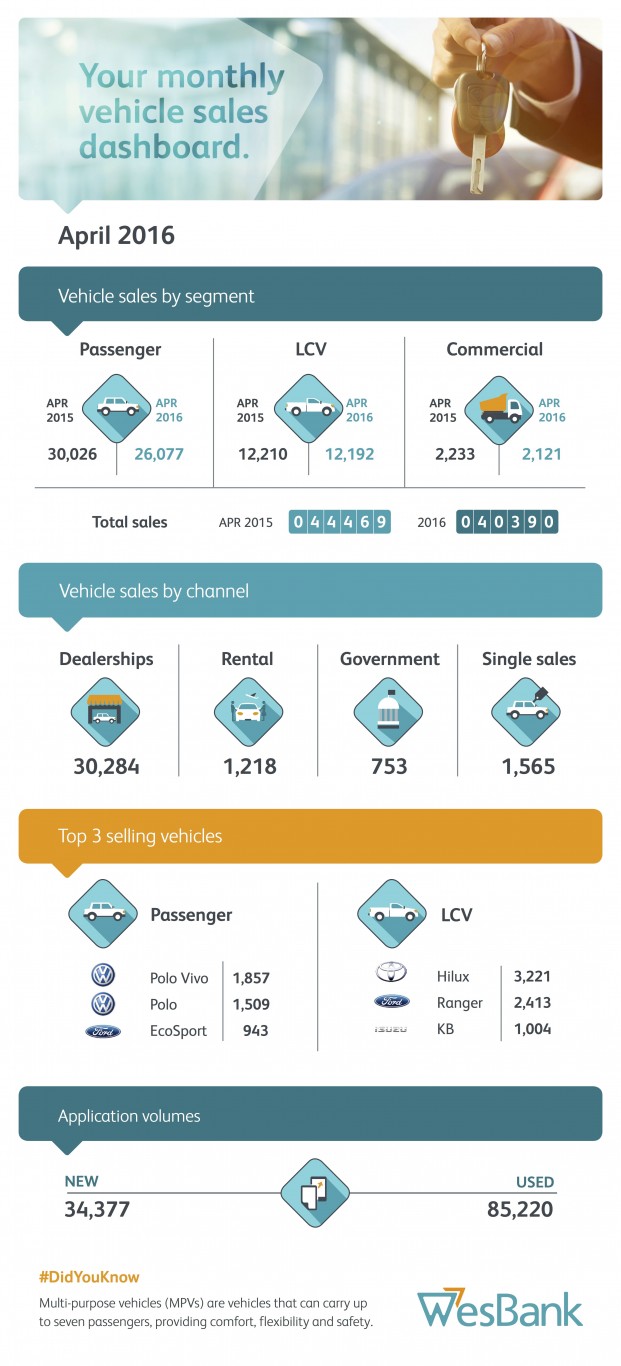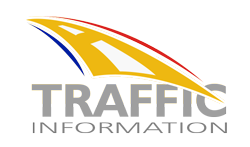Consumer exodus to pre-owned market fuels new vehicle sales decline
The South African new vehicle sales market continued its 2016 decline, this April. According to the latest aggregated figures from the National Association of Automobile Manufacturers of South Africa (Naamsa) total industry new vehicle sales declined 9.2%, year-on-year, with only 40 390 new vehicles sold across all segments.
Passenger car sales fell 13.2%, year-on-year, with sales of 26 077 new cars during April. In the Light Commercial Vehicle (LCV) segment the arrival of highly anticipated new models helped buck the downward trend somewhat, with a minor 0.1% sales decline, compared to the same period last year. However, this is expected to be short-lived and should normalise within one or two months.
Sales through the dealer channel fell 5%, reflective of consumers continuing to move to the pre-owned market. Passenger car sales through the dealer channel plummeted 13.7% compared to the previous year, while LCV sales through the dealer channel grew 15.6% – indicative of the pent-up demand for the aforementioned new arrivals. Growth in the rental channel continued during April, with sales up 17.8%.
“So far, every month this year has seen the new vehicle sales industry take a beating, despite positive growth in the rental channel,” said Simphiwe Nghona, CEO of WesBank Motor Retail. “The year-to-date sales figures indicate a decline of 9.7%, which is in line with our forecast for the year in the current economic climate.”
WesBank’s data shows that the demand for new vehicles has slowed notably. During April 2016 application volumes for new vehicles were down 7.1% compared to the same period last year, a figure that is exacerbated by sustained new car price inflation.
During this past month the average new deal value was R287 000. This compares starkly to April 2015, when the average deal value was R257 000. This 11.8% difference is evidence of sharply rising new car prices.
Household budgets face increasing pressure in the form of rising interest rates and mobility costs. The prime interest rate has been hiked from 8.5% to 10.5%, since January 2014. Fuel prices have increased by nearly R1 per litre since March 2016. Given this, new vehicles have become even more unaffordable and consumers continue to flock to the used car market in a search for value and affordability. Demand for used cars, as measured by application volumes, grew 9.2%, year-on-year. In April the ratio for used-to-new finance applications was 2.47:1.
“Although the Rand seems to have stabilised, the damage of the sustained weakness of the past few year has taken its toll on the market. This affects affordability, which is the biggest driver for consumers moving to the used car market,” said Nghona. “Consumers can’t control interest rates or inflation, but they can control affordability through the car they buy. In the current economic climate the used vehicle market is their best choice.”
Also view:
Weakeness in April new vehicle sales but resilience in light commercial vehicles
Vehicle Finance, Car Insurance and Road Safety
Buying and Selling a Vehicle – Informed decisions and the Vehicle Retailer

Related Posts
« Aireon and ATNS Sign First Regional Commercialization Agreement Illegal Metrorail Strike: SATAWU blamed for putting workers at risk »



























